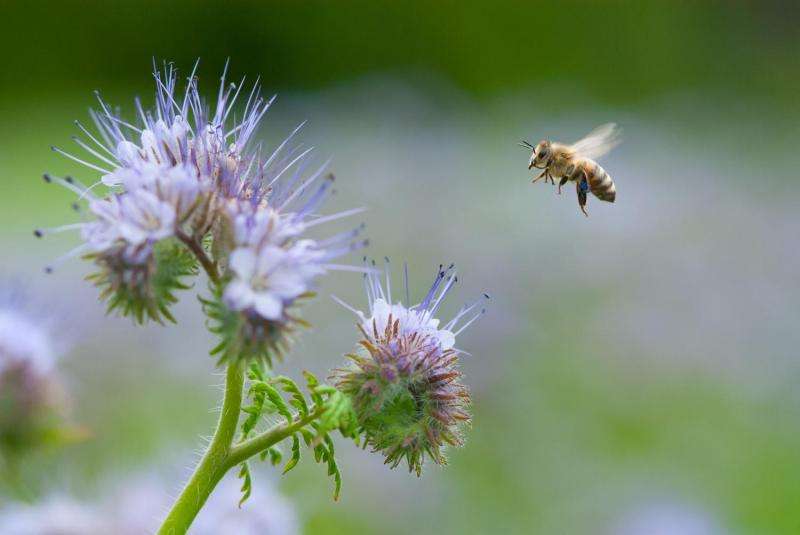January 22, 2016 report
Increasing pollinator numbers and diversity a possible way to increase crop yields

(Phys.org)—A large team of researchers with members from across the globe has found that small farms with higher densities of pollinators produce more food than those with lower densities—for larger farms, the difference in yield was more closely related to pollinator diversity. In their paper published in the journal Science, the team describes their study and analysis of multiple farms in Asia, South America and Africa over a five year period and what they learned about ways to increase crop yields in the years ahead.
Some scientists have predicted that the amount of food grown will have to double by 2050 to keep up with a growing world population, and one way to do that, the researchers with this new effort contend, is by narrowing or closing the yield gap (the difference in yield between the most productive farms and the least). One way to do that, they believe, is by increasing the number of pollinators on small (less than 2 hectares) farms and increasing diversity on larger farms.
The researchers came to this conclusion by conducting a five year study of 344 farms of all sizes, looking at 33 crops in particular, all of which need pollinators to bear fruit. The team monitored pollinator visits for each field counting numbers of pollinators broken down by species to allow for calculating diversity. In analyzing the data that was collected, the researchers found that the yield gap on small farms was approximately 47 percent and that there were far fewer pollinators visiting lower yield farms than the higher yield ones, suggesting that increasing pollinator numbers on less productive farms would likely bump up yields. The researchers note this is important because approximately 2 billion people around the world rely on food from such small farms. With larger farms, the story was different, rather than pollinator density making a difference, it was diversity—farms with a higher degree of different pollinators, such as bees, beetles, wasps, butterflies, etc. had higher yields. This suggests of course that lower yield producing large farms could bump their yields simply by attracting more different kinds of pollinators.
The researchers suggest that farms of any size could attract more pollinators by planting strips of plants, such as flowers, close to crops that are very attractive to pollinators or by changing pesticide application patterns to minimize exposure to pollinators.
More information: L. A. Garibaldi et al. Mutually beneficial pollinator diversity and crop yield outcomes in small and large farms, Science (2016). DOI: 10.1126/science.aac7287
Abstract
Ecological intensification, or the improvement of crop yield through enhancement of biodiversity, may be a sustainable pathway toward greater food supplies. Such sustainable increases may be especially important for the 2 billion people reliant on small farms, many of which are undernourished, yet we know little about the efficacy of this approach. Using a coordinated protocol across regions and crops, we quantify to what degree enhancing pollinator density and richness can improve yields on 344 fields from 33 pollinator-dependent crop systems in small and large farms from Africa, Asia, and Latin America. For fields less than 2 hectares, we found that yield gaps could be closed by a median of 24% through higher flower-visitor density. For larger fields, such benefits only occurred at high flower-visitor richness. Worldwide, our study demonstrates that ecological intensification can create synchronous biodiversity and yield outcomes.
Journal information: Science
© 2016 Phys.org





















